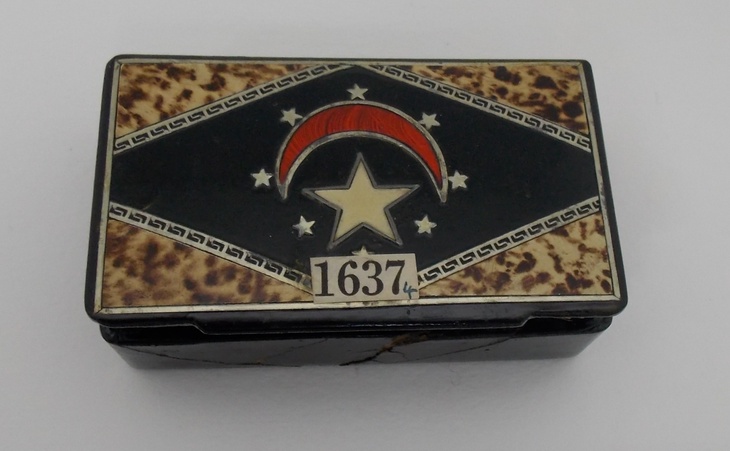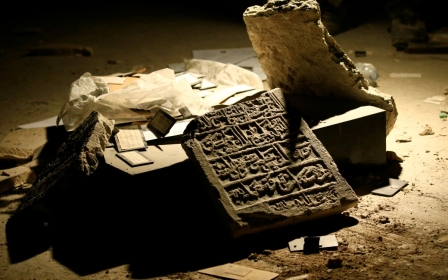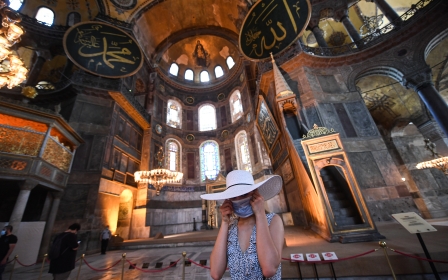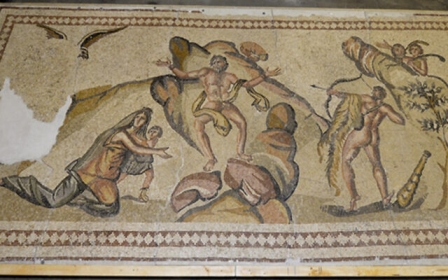Great Pyramid relic found in cigar box at university in Scotland

A lost artefact from the Great Pyramid of Giza that had been missing for more than 70 years was found in a cigar box at the University of Aberdeen by an Egyptian curatorial assistant.
The artefact, one of only three objects ever recovered from inside the Great Pyramid, may shed new light on the structure, the university said in a news release on Wednesday.
Abeer Eladany was reviewing items in the University of Aberdeen's museum Asian collections when she came across an item that didn't seem to belong.
Eladany, who spent 10 years working in the Egyptian Museum in Cairo, "was immediately intrigued", as the cigar box featured her country’s former flag on top. Opening it, Eladany found several pieces of ancient cedar wood fragments.
New MEE newsletter: Jerusalem Dispatch
Sign up to get the latest insights and analysis on Israel-Palestine, alongside Turkey Unpacked and other MEE newsletters
Cross-referencing the item with other records, Eladany said she quickly realised she had discovered the "lost Dixon relic", one of three items uncovered inside the pyramid’s Queens Chamber in 1872 by engineer Waynman Dixon.
"Once I looked into the numbers in our Egypt records, I instantly knew what it was, and that it had effectively been hidden in plain sight in the wrong collection,” Eladany said in Wednesday's news release.
"I’m an archaeologist and have worked on digs in Egypt, but I never imagined it would be here in northeast Scotland that I’d find something so important to the heritage of my own country."
The three Dixon relics
Two of the Dixon artefacts - a ball and a hook - are housed in the British Museum. The third, which Eladany discovered, the fragment of wood that has broken into several, had been missing for decades.
"The lost piece of cedar has generated many theories about its purpose and date and holds particular significance because of the potential for radiocarbon dating. Some have speculated that it was part of a measuring rule which could reveal clues regarding the pyramid’s construction," the university said in the news release.
The "lost" cedar fragment has shown that the wood can be dated to somewhere in the period 3341-3094BC - about 500 years earlier than historical records that date the Great Pyramid to the reign of the Pharaoh Khufu in 2580-2560BC, according to the university.
The university said the age of the relic supports the idea that – whatever their use – the Dixon Relics were original to the construction of the Great Pyramid and not later artefacts left behind by those exploring the chambers.
“It may be just a small fragment of wood, which is now in several pieces, but it is hugely significant given that it is one of only three items ever to be recovered from inside the Great Pyramid.
“The university’s collections are vast - running to hundreds of thousands of items - so looking for it has been like finding a needle in a haystack. I couldn’t believe it when I realised what was inside this innocuous-looking cigar tin.”
Neil Curtis, head of museums and special collections at the University of Aberdeen, said: “Finding the missing Dixon Relic was a surprise, but the carbon dating has also been quite a revelation.
“It is even older than we had imagined. This may be because the date relates to the age of the wood, maybe from the centre of a long-lived tree. Alternatively, it could be because of the rarity of trees in ancient Egypt, which meant that wood was scarce, treasured and recycled or cared for over many years.
“It will now be for scholars to debate its use and whether it was deliberately deposited, as happened later during the New Kingdom, when pharaohs tried to emphasise continuity with the past by having antiquities buried with them.
“This discovery will certainly reignite interest in the Dixon Relics and how they can shed light on the Great Pyramid.”
Middle East Eye delivers independent and unrivalled coverage and analysis of the Middle East, North Africa and beyond. To learn more about republishing this content and the associated fees, please fill out this form. More about MEE can be found here.






